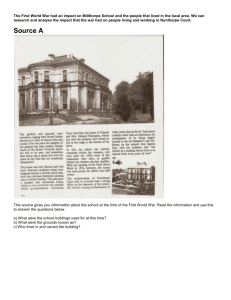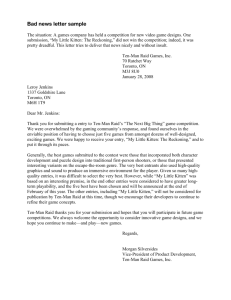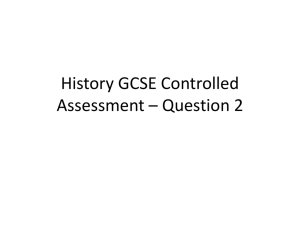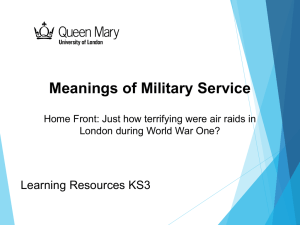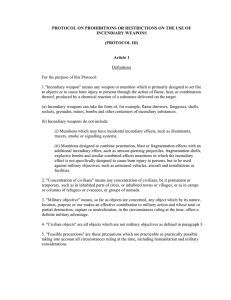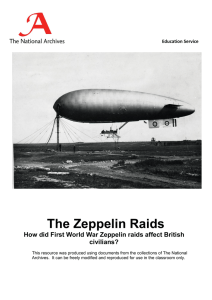Photograph in focus: The Hull Blitz
advertisement
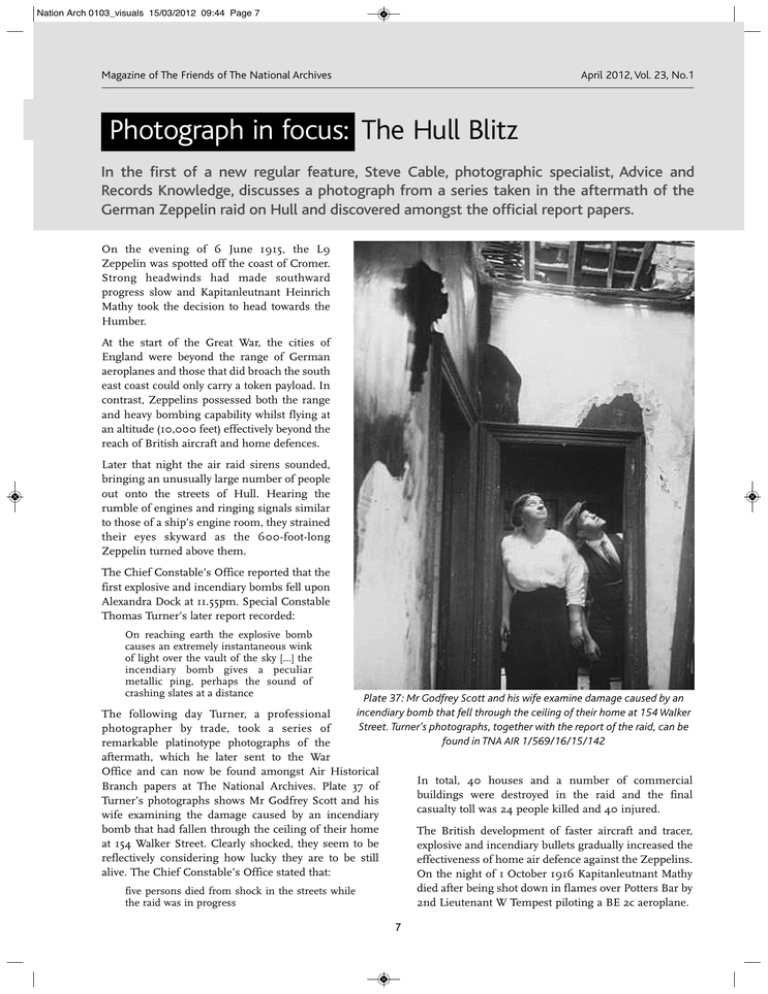
Nation Arch 0103_visuals 15/03/2012 09:44 Page 7 Magazine of The Friends of The National Archives April 2012, Vol. 23, No.1 Photograph in focus: The Hull Blitz In the first of a new regular feature, Steve Cable, photographic specialist, Advice and Records Knowledge, discusses a photograph from a series taken in the aftermath of the German Zeppelin raid on Hull and discovered amongst the official report papers. On the evening of 6 June 1915, the L9 Zeppelin was spotted off the coast of Cromer. Strong headwinds had made southward progress slow and Kapitanleutnant Heinrich Mathy took the decision to head towards the Humber. At the start of the Great War, the cities of England were beyond the range of German aeroplanes and those that did broach the south east coast could only carry a token payload. In contrast, Zeppelins possessed both the range and heavy bombing capability whilst flying at an altitude (10,000 feet) effectively beyond the reach of British aircraft and home defences. Later that night the air raid sirens sounded, bringing an unusually large number of people out onto the streets of Hull. Hearing the rumble of engines and ringing signals similar to those of a ship’s engine room, they strained their eyes skyward as the 600-foot-long Zeppelin turned above them. The Chief Constable’s Office reported that the first explosive and incendiary bombs fell upon Alexandra Dock at 11.55pm. Special Constable Thomas Turner’s later report recorded: On reaching earth the explosive bomb causes an extremely instantaneous wink of light over the vault of the sky [...] the incendiary bomb gives a peculiar metallic ping, perhaps the sound of crashing slates at a distance Plate 37: Mr Godfrey Scott and his wife examine damage caused by an incendiary bomb that fell through the ceiling of their home at 154 Walker Street. Turner’s photographs, together with the report of the raid, can be found in TNA AIR 1/569/16/15/142 The following day Turner, a professional photographer by trade, took a series of remarkable platinotype photographs of the aftermath, which he later sent to the War Office and can now be found amongst Air Historical Branch papers at The National Archives. Plate 37 of Turner’s photographs shows Mr Godfrey Scott and his wife examining the damage caused by an incendiary bomb that had fallen through the ceiling of their home at 154 Walker Street. Clearly shocked, they seem to be reflectively considering how lucky they are to be still alive. The Chief Constable’s Office stated that: In total, 40 houses and a number of commercial buildings were destroyed in the raid and the final casualty toll was 24 people killed and 40 injured. The British development of faster aircraft and tracer, explosive and incendiary bullets gradually increased the effectiveness of home air defence against the Zeppelins. On the night of 1 October 1916 Kapitanleutnant Mathy died after being shot down in flames over Potters Bar by 2nd Lieutenant W Tempest piloting a BE 2c aeroplane. five persons died from shock in the streets while the raid was in progress 7
